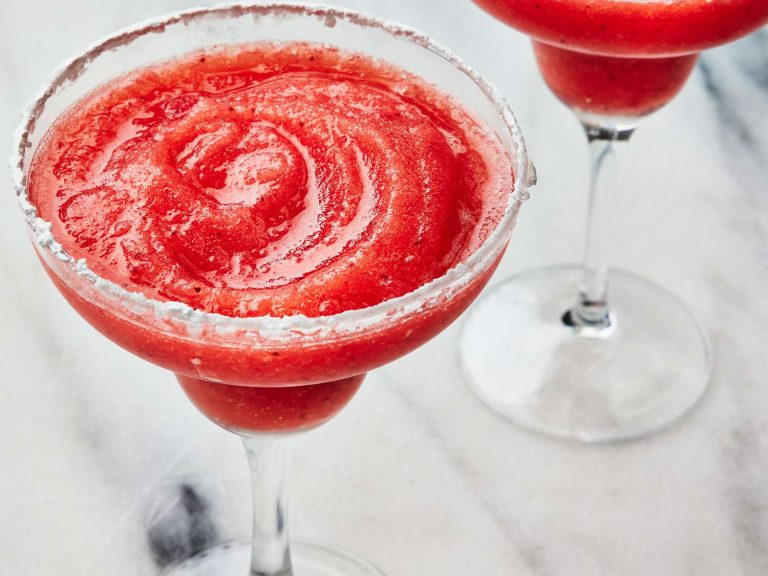Coconut Ambrosia Salad: History, Recipe, and Perfect Pairings for Every Occasion
Coconut Ambrosia Salad originated in the southern United States during the late 19th century. This dessert quickly became a staple at southern gatherings due to its simple preparation and refreshing taste. Documented recipes from cookbooks such as The Good Housekeeping Woman’s Home Cook Book (1909) indicate its early popularity. Churches, picnics, and family reunions frequently feature this dish. Its name, inspired by the “food of the gods” in Greek mythology, underscores its widespread appeal and perceived luxury.
Evolution of the Recipe
Initial recipes for Coconut Ambrosia Salad consisted of basic ingredients: grated coconut, orange segments, and sugar. By the mid-20th century, variations included ingredients such as marshmallows, cherries, and whipped cream. Post-World War II, the rise of canned fruit and ready-made whipped toppings further diversified the recipe. Today, some versions incorporate yogurt or sour cream for a tangy twist, while others use tropical fruits like pineapple and mango. This evolution demonstrates how the dish adapts to contemporary tastes while maintaining its core elements.
Key Ingredients in Coconut Ambrosia Salad
Essential Components
Grated Coconut: Coconut forms the foundation of the salad, adding texture and a tropical flavor. Fresh grated coconut provides the best taste, but packaged coconut can also be used.
Mandarin Oranges: These citrus segments add brightness and sweetness. Canned versions are convenient and available year-round.
Pineapple: Pineapple chunks or tidbits contribute a juicy and tangy element. Fresh pineapple enhances flavor, but canned pineapple in its juice is a good alternative.
Marshmallows: Mini marshmallows bring sweetness and a soft, chewy texture.
Whipped Cream: Whipped cream or whipped topping binds the ingredients together, adding creaminess. It’s often sweetened to balance the tartness of the fruit.
Common Variations
Cherries: Maraschino cherries add vibrant color and a sweet-tart flavor.
Nuts: Chopped pecans or walnuts contribute a crunchy texture and a nutty taste.
Yogurt: Using yogurt instead of whipped cream gives a tangy twist and makes the salad lighter.
Sour Cream: Sour cream adds richness and a slight tang, balancing the sweetness of the other ingredients.
Coconut Flakes: Toasted coconut flakes offer a crunchy texture and enhance the coconut flavor.
How to Make Coconut Ambrosia Salad
Step-by-Step Recipe
To make Coconut Ambrosia Salad, use the following ingredients:
- 1 cup of shredded coconut
- 1 can (15 oz) of mandarin oranges, drained
- 1 can (20 oz) of pineapple chunks, drained
- 1 cup of mini marshmallows
- 1 cup of whipped cream or whipped topping
- 1/2 cup of maraschino cherries, halved (optional)
- 1/2 cup of chopped nuts (optional)
Instructions:
- Combine Ingredients: In a large mixing bowl, combine the shredded coconut, mandarin oranges, pineapple chunks, and mini marshmallows.
- Fold in Cream: Gently fold in the whipped cream or whipped topping until all ingredients are evenly coated.
- Add Extras: If using, mix in the halved maraschino cherries and chopped nuts.
- Chill Salad: Refrigerate the salad for at least one hour before serving to allow the flavors to meld.
- Serve: Serve cold, ensuring each serving contains a good mix of fruit and marshmallows.
Tips for the Best Salad
Use fresh ingredients where possible to enhance the flavors of Coconut Ambrosia Salad. If you substitute fresh oranges or pineapple for canned, make sure they are well-drained to avoid excess moisture.
Storage:
Store the Coconut Ambrosia Salad in an airtight container in the refrigerator. It stays fresh for up to 3 days.
Serving:
Serve the salad in a chilled bowl to keep it cool longer, especially during outdoor events or warm weather gatherings. Garnish with extra coconut flakes for a decorative touch.
Variations:
Experiment with extra mix-ins like Greek yogurt for added creaminess or sour cream for a tangier flavor. Add a splash of vanilla extract for a subtle enhancement.
By following these steps and tips, you ensure your Coconut Ambrosia Salad is both delicious and visually appealing.
Health Benefits and Nutritional Info
Nutritional Breakdown
Coconut Ambrosia Salad offers a mix of nutrients that contribute to a balanced diet. A typical serving (about 150 grams) contains around 200 calories. It includes:
- Carbohydrates: 30 grams, mainly from fruits like mandarin oranges and pineapples.
- Protein: 2 grams, from ingredients like yogurt or sour cream.
- Fats: 7 grams, mostly from coconut and nuts.
- Fiber: 3 grams, supporting digestive health.
- Sugars: 20 grams, due to both natural fruit sugars and added sweeteners.
Health Impacts of Ingredients
Coconut: Rich in medium-chain triglycerides (MCTs), coconut provides quick energy and may aid in weight management.
Mandarin Oranges and Pineapples: High in vitamin C, these fruits boost your immune system and support skin health.
Marshmallows and Whipped Cream: While tasty, these items contain high amounts of sugar and saturated fats.
Yogurt or Sour Cream: Probiotics in yogurt can improve gut health, and sour cream adds calcium for bone health.
Nuts: Packed with healthy fats and protein, nuts help with heart health and provide sustained energy.
These ingredients create not only a delicious but also a nutrient-rich dessert.
Serving and Pairing Suggestions
Best Occasions for Coconut Ambrosia Salad
Coconut Ambrosia Salad is versatile, making it suitable for many occasions. It shines at holiday gatherings, specifically Easter, Thanksgiving, and Christmas. You can serve it as a refreshing dessert at summer barbecues and picnics. Its sweet and creamy texture also fits well at potlucks and family reunions, where its nostalgic flavors bring back fond memories.
Food and Drink Pairings
For a balanced meal, pair Coconut Ambrosia Salad with savory dishes like grilled chicken or glazed ham. Its sweetness complements salty appetizers, such as cheese platters or charcuterie boards. Ideal beverages include citrusy cocktails, iced tea, or light white wines like Pinot Grigio. These drinks enhance the fruity notes of the salad, creating a harmonious dining experience.
Conclusion
Coconut Ambrosia Salad is more than just a dessert; it’s a celebration of flavors and traditions. Whether you’re hosting a holiday feast or a casual summer get-together, this versatile dish fits right in. By using fresh ingredients and exploring different variations, you can create a delightful treat that appeals to everyone. Pair it with complementary dishes and beverages to elevate your dining experience. Dive into the world of Coconut Ambrosia Salad and enjoy a timeless classic that continues to bring joy to every occasion.






